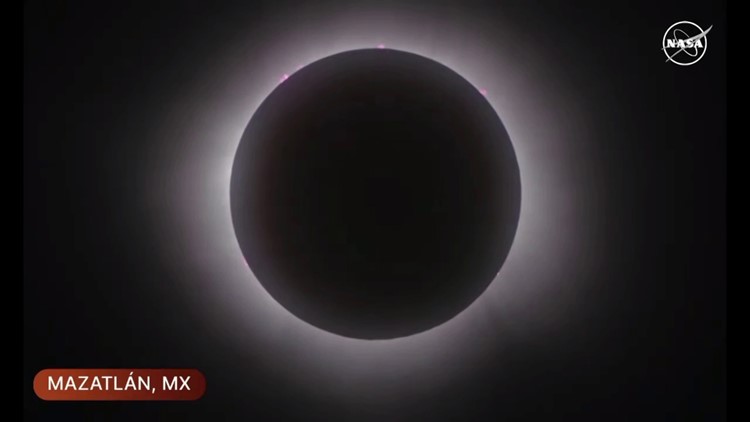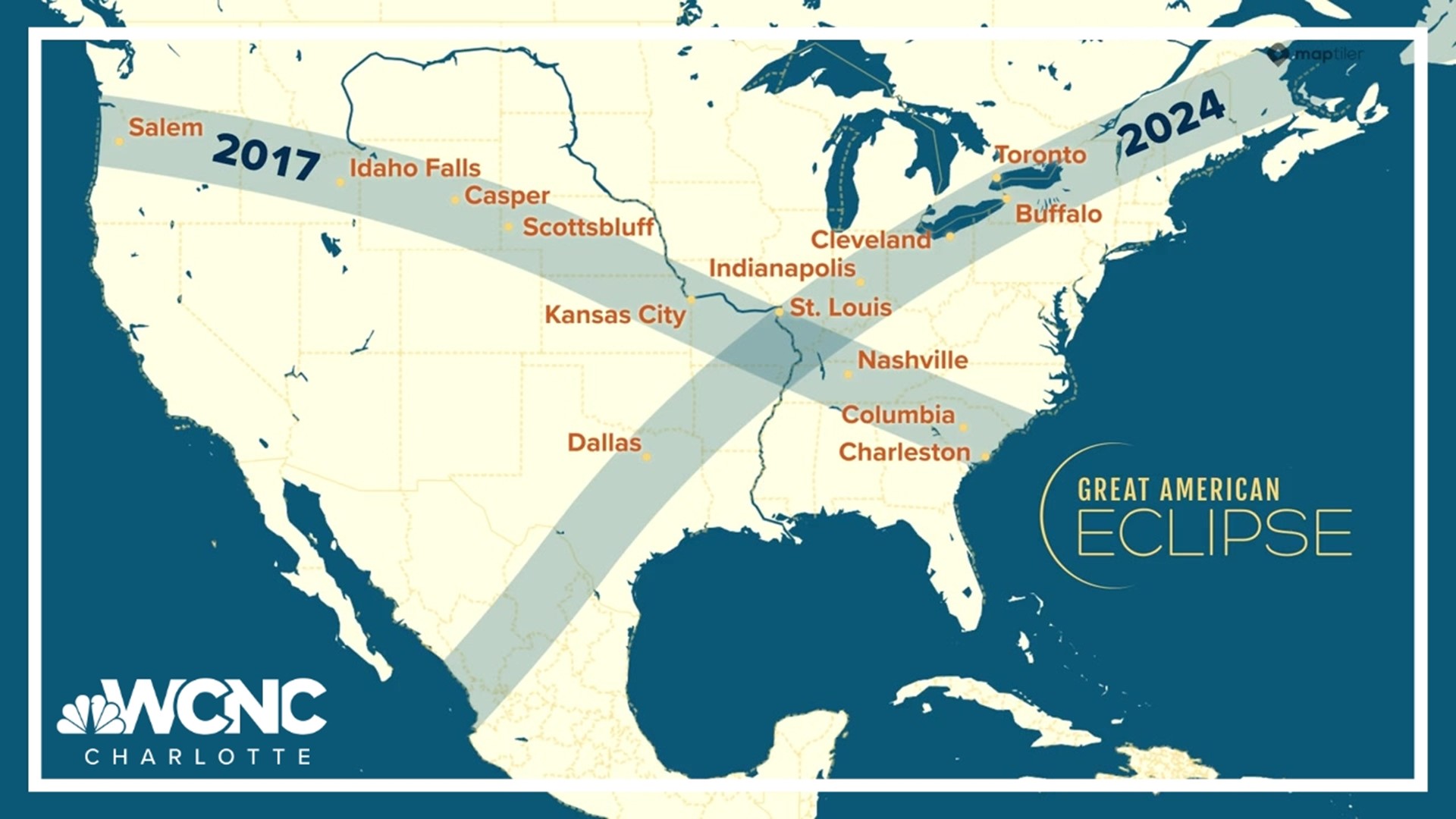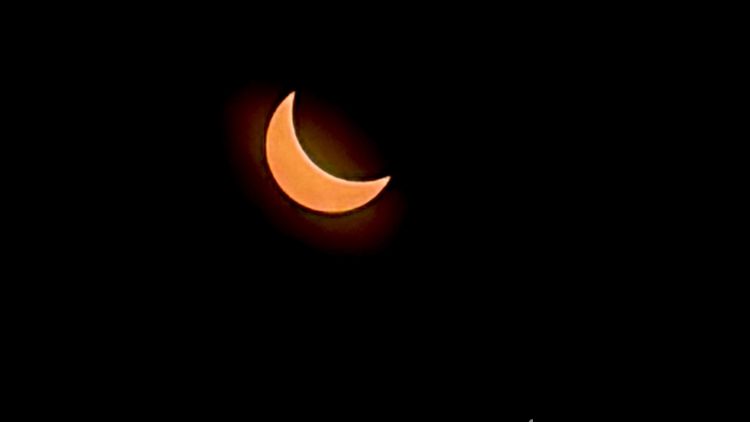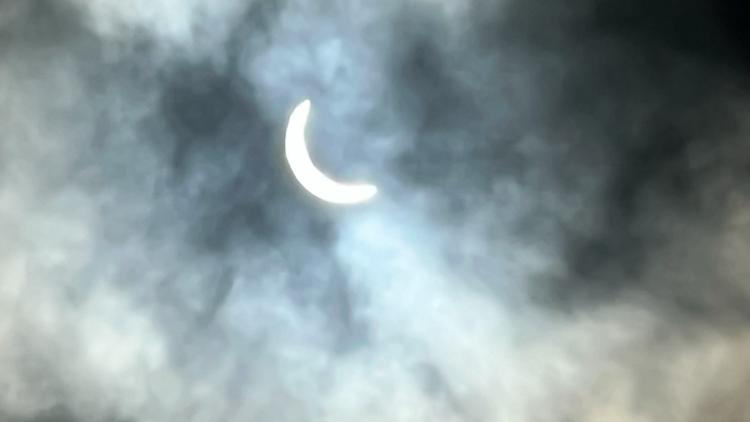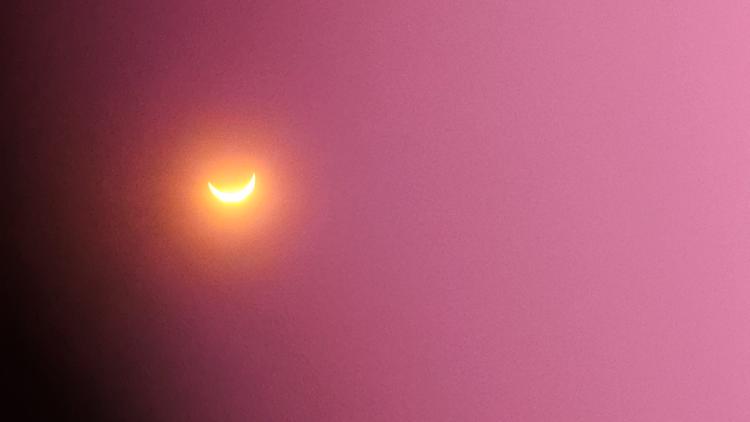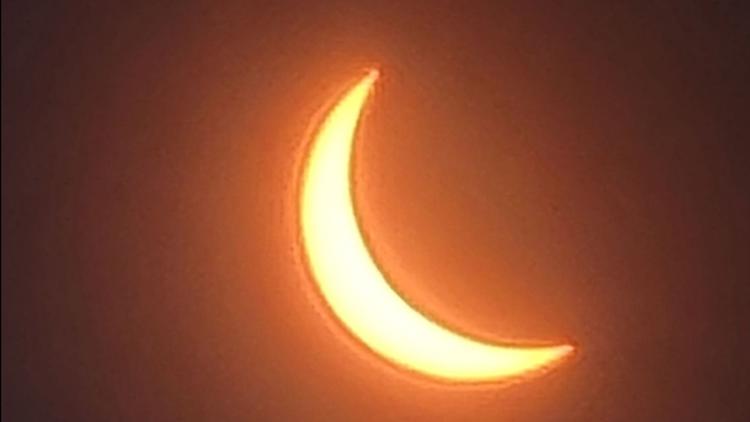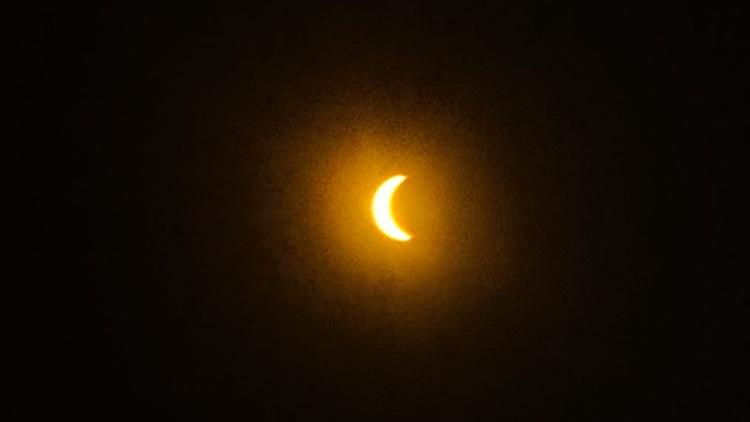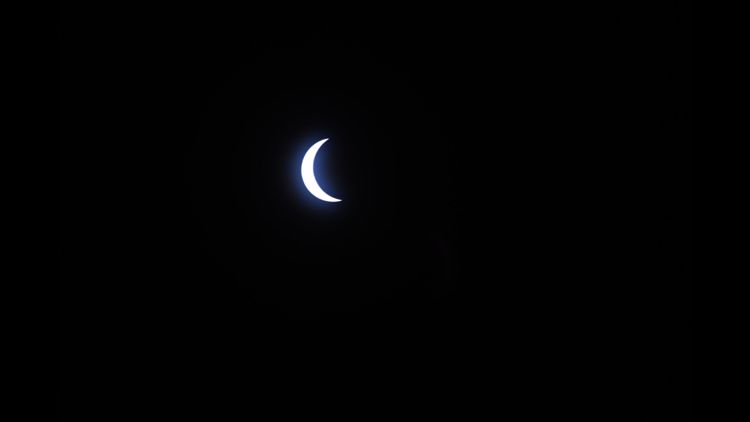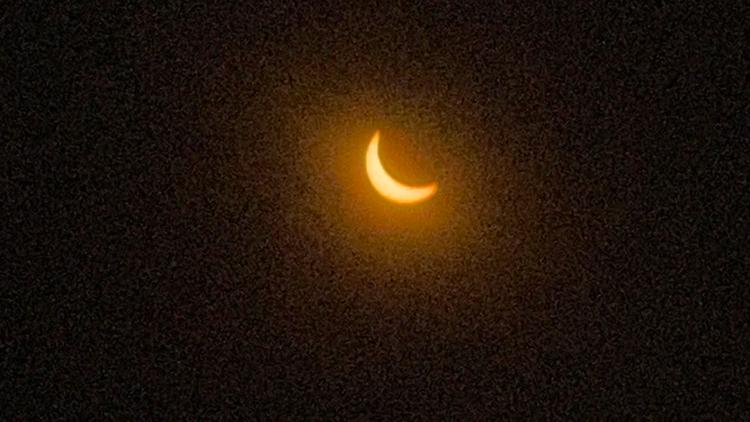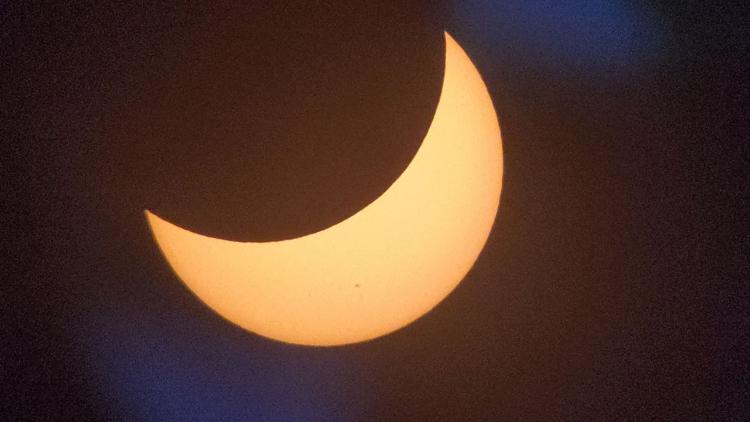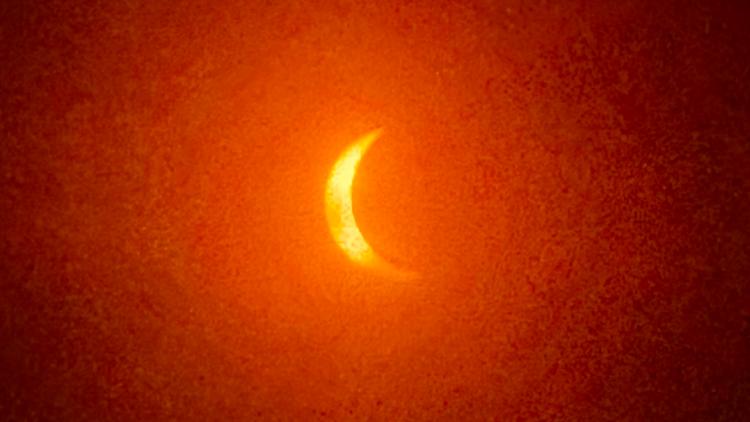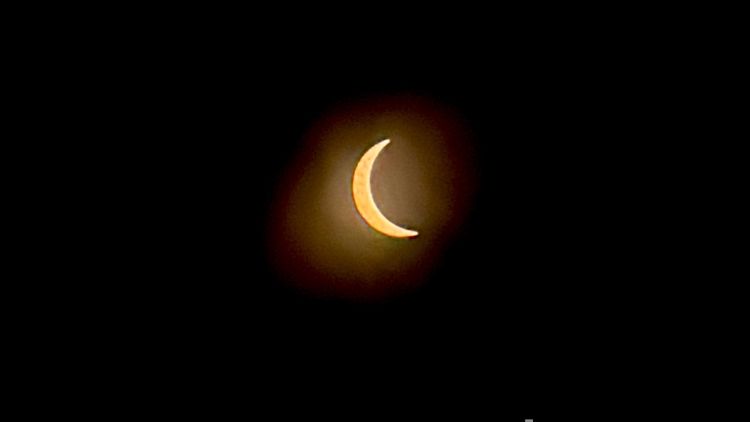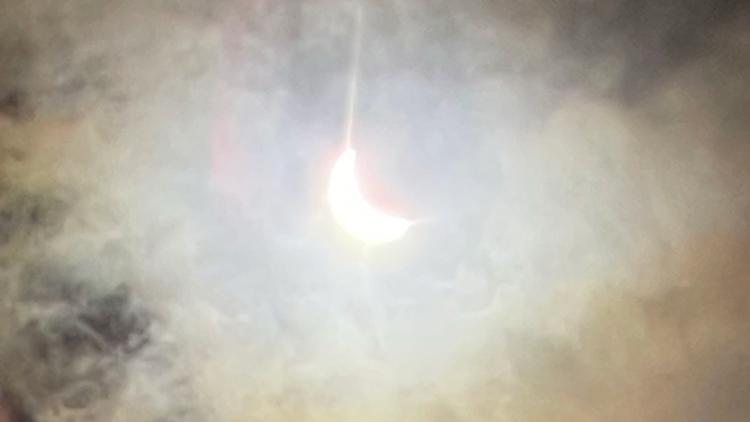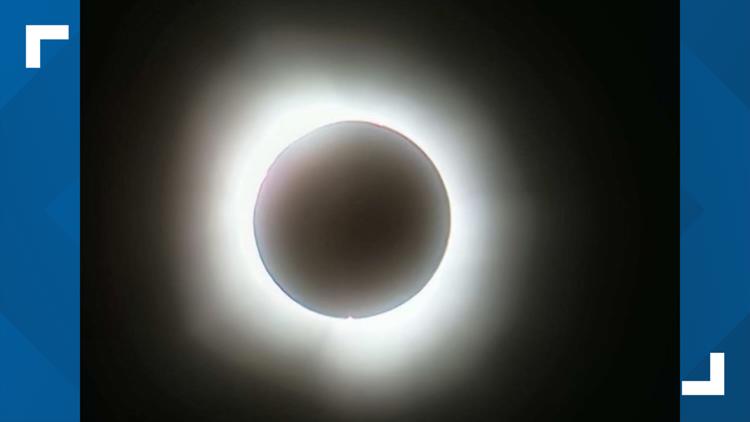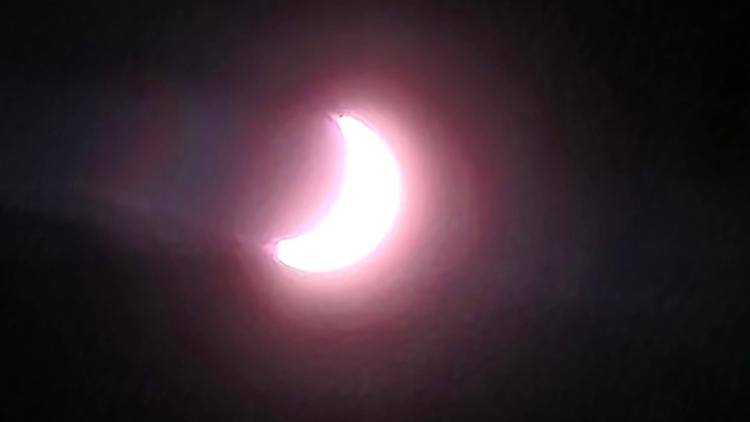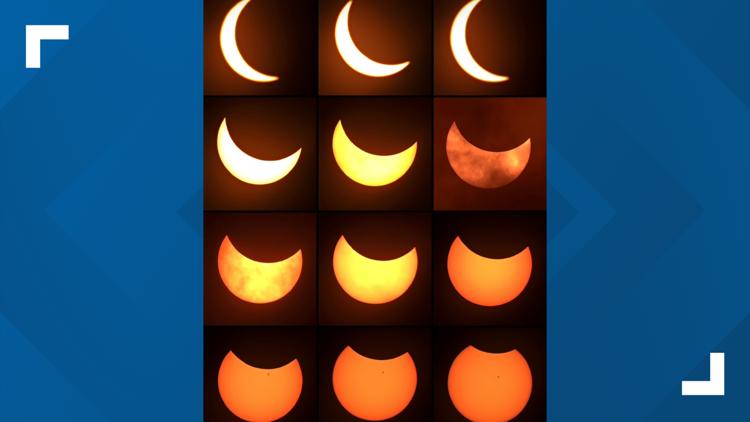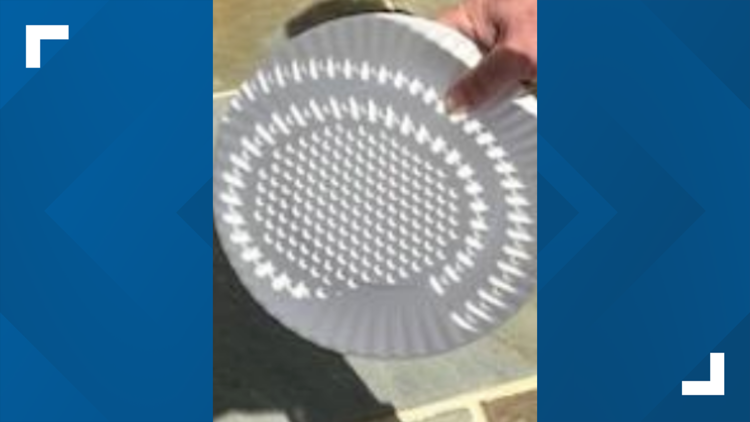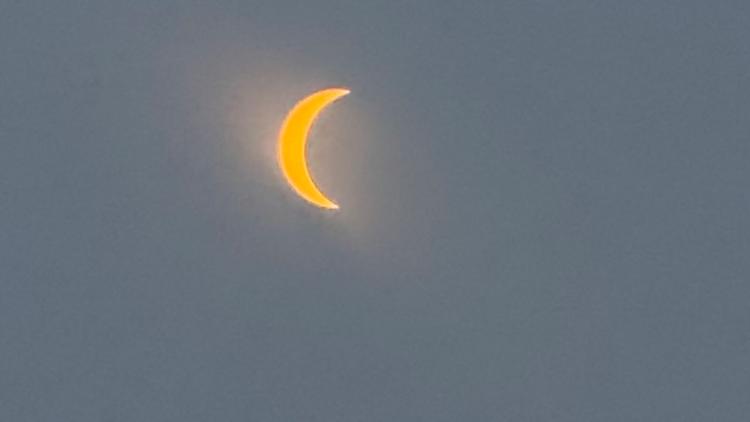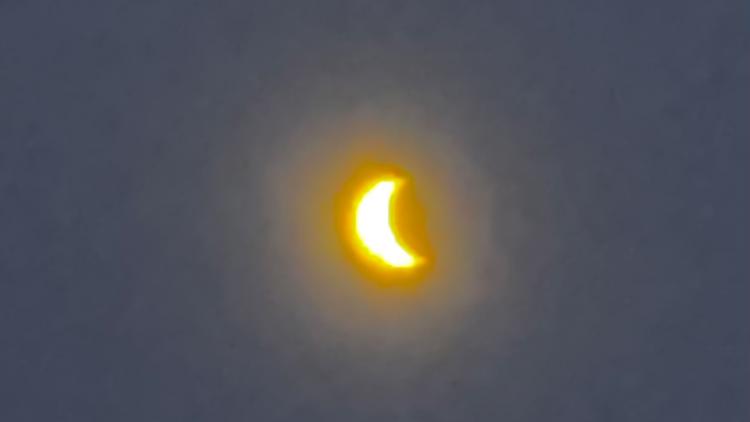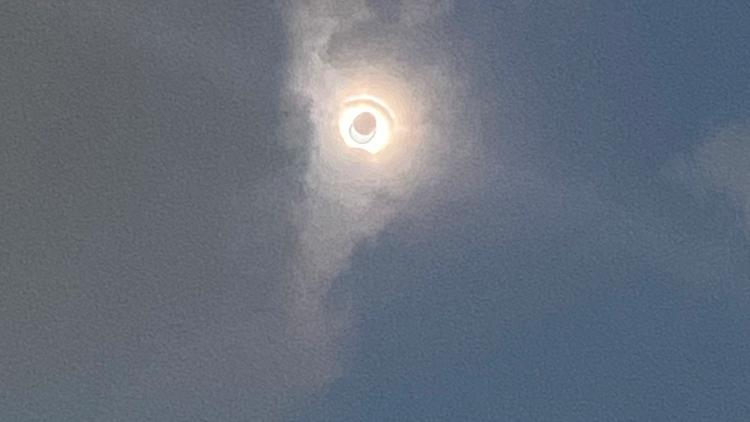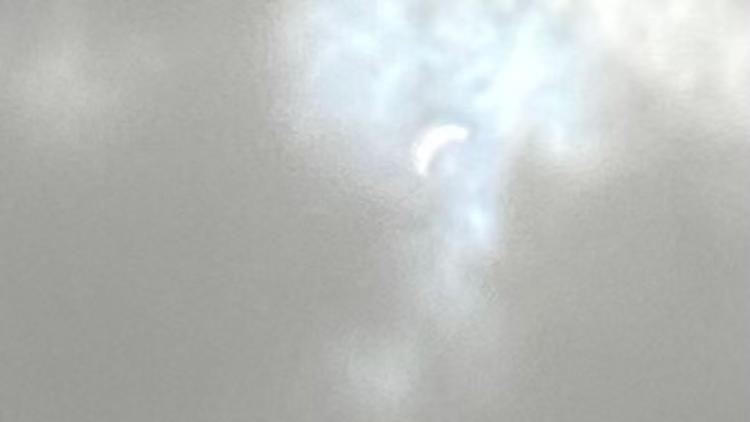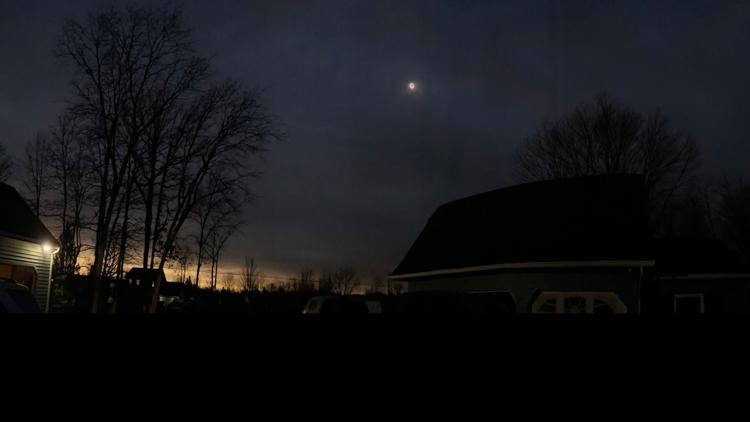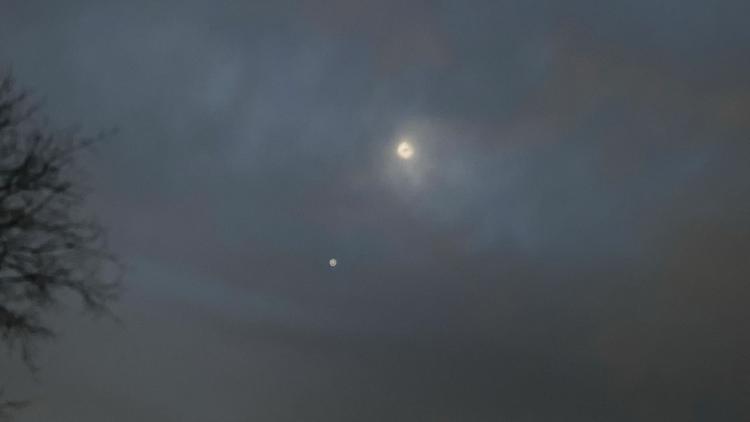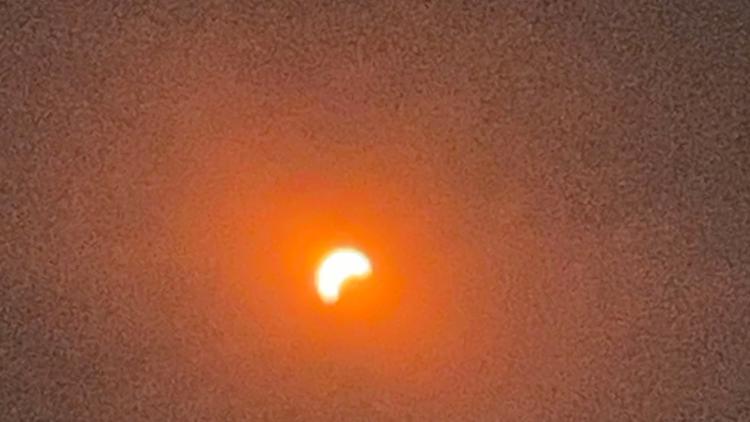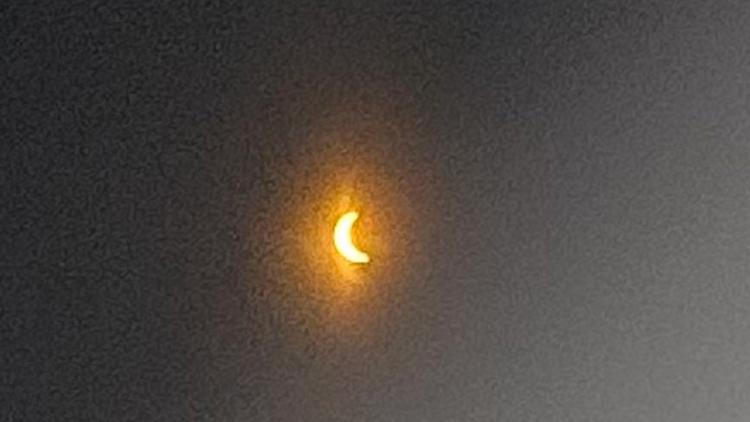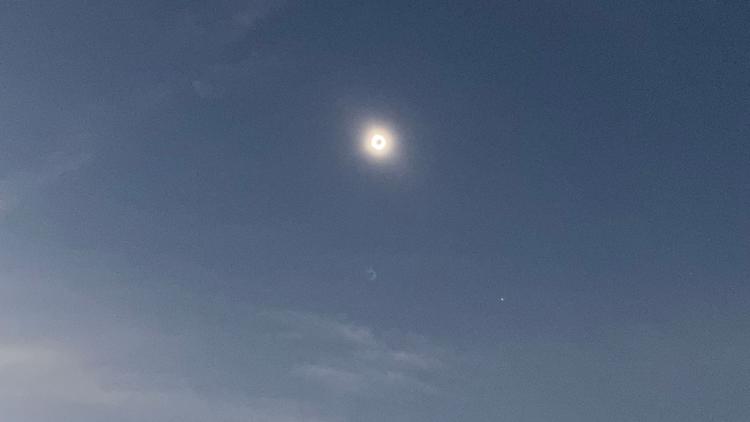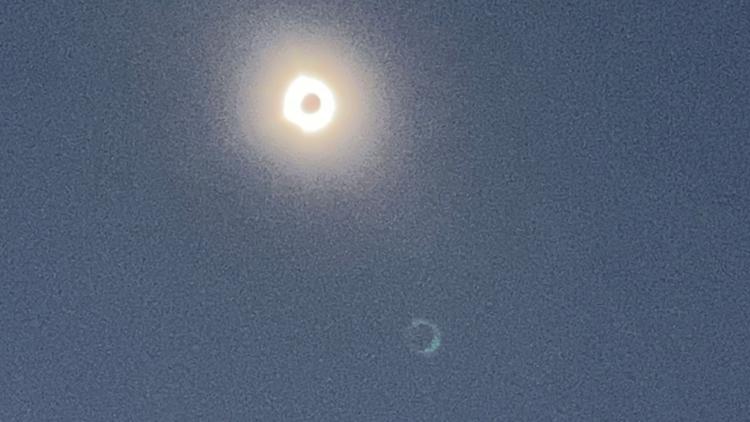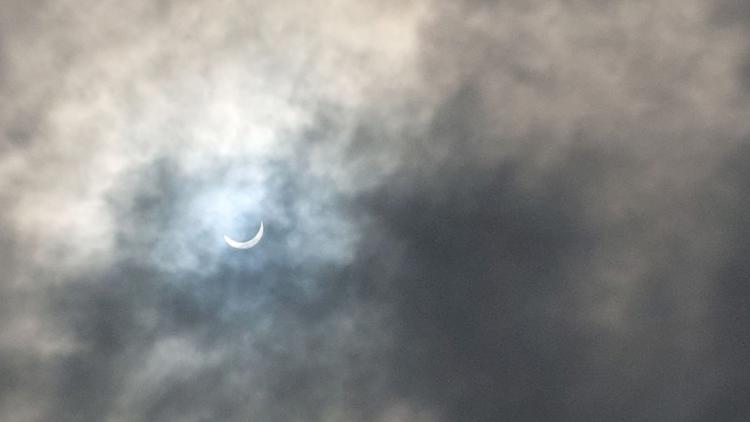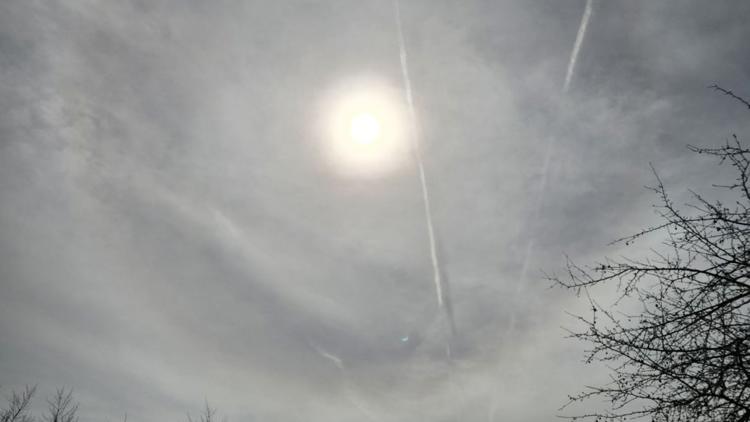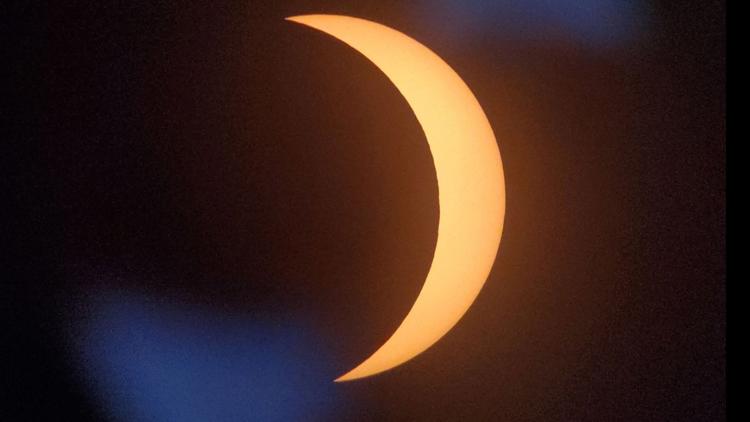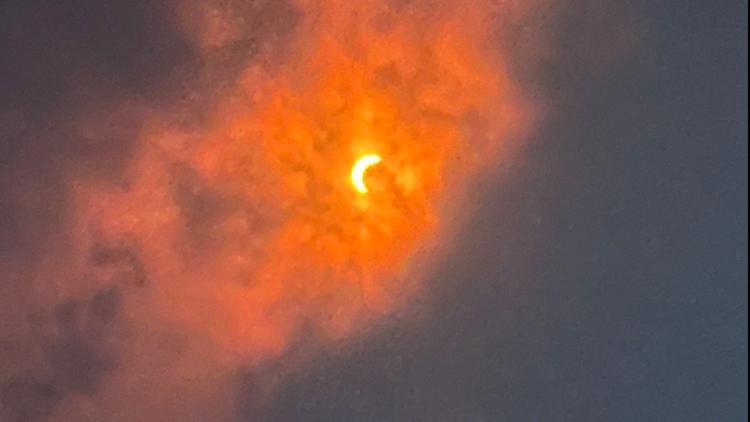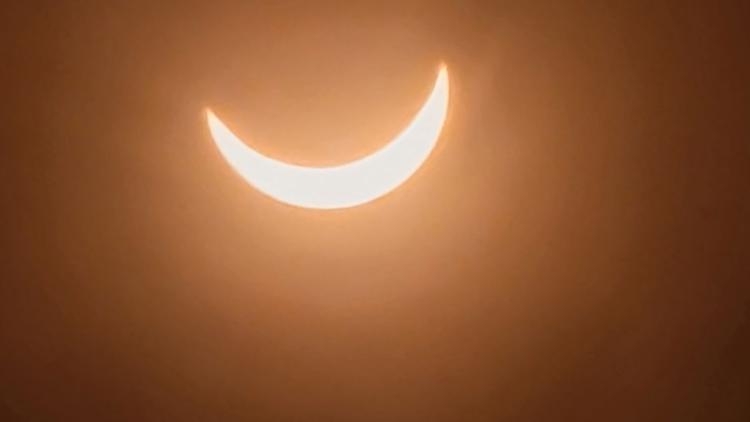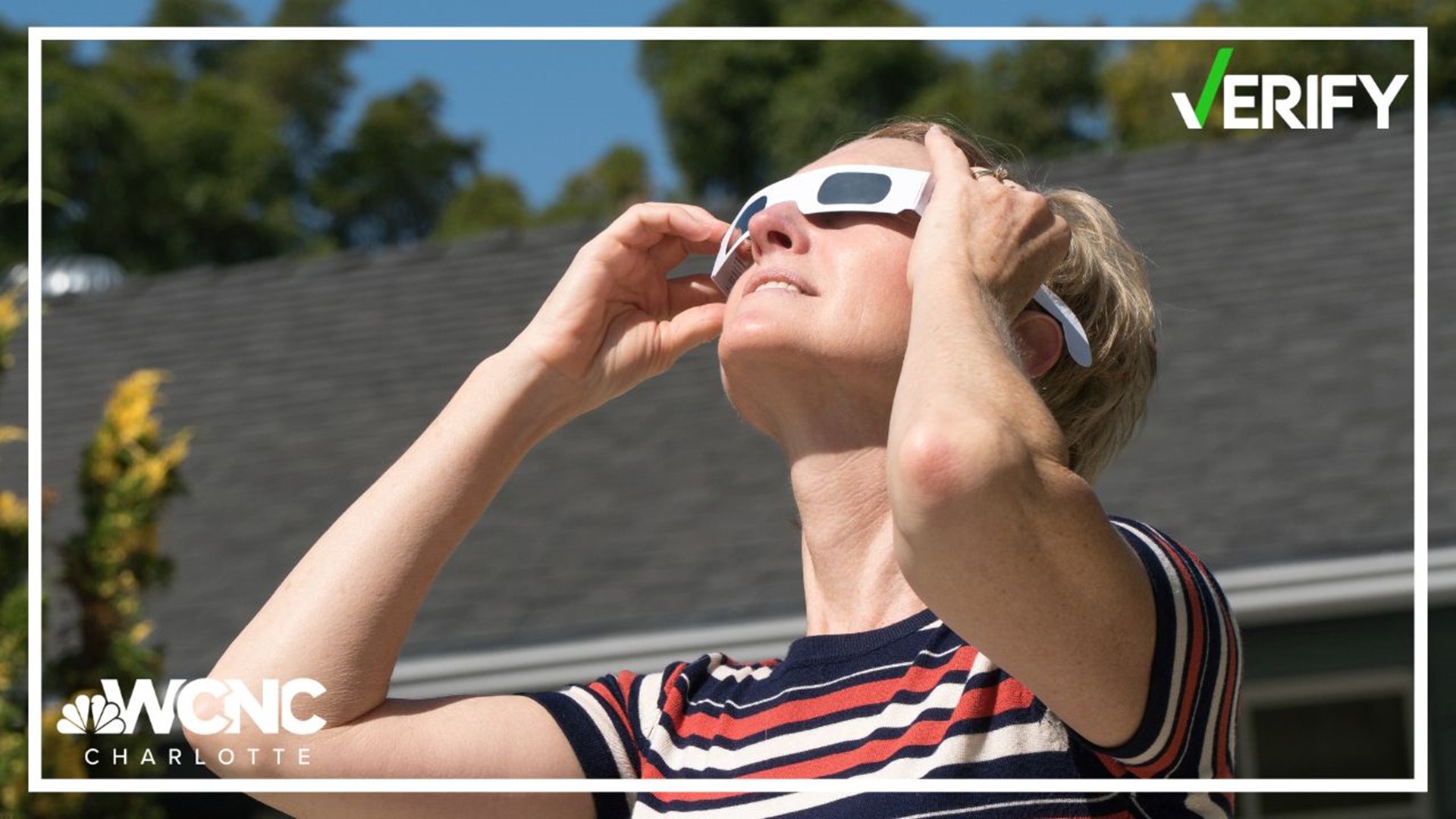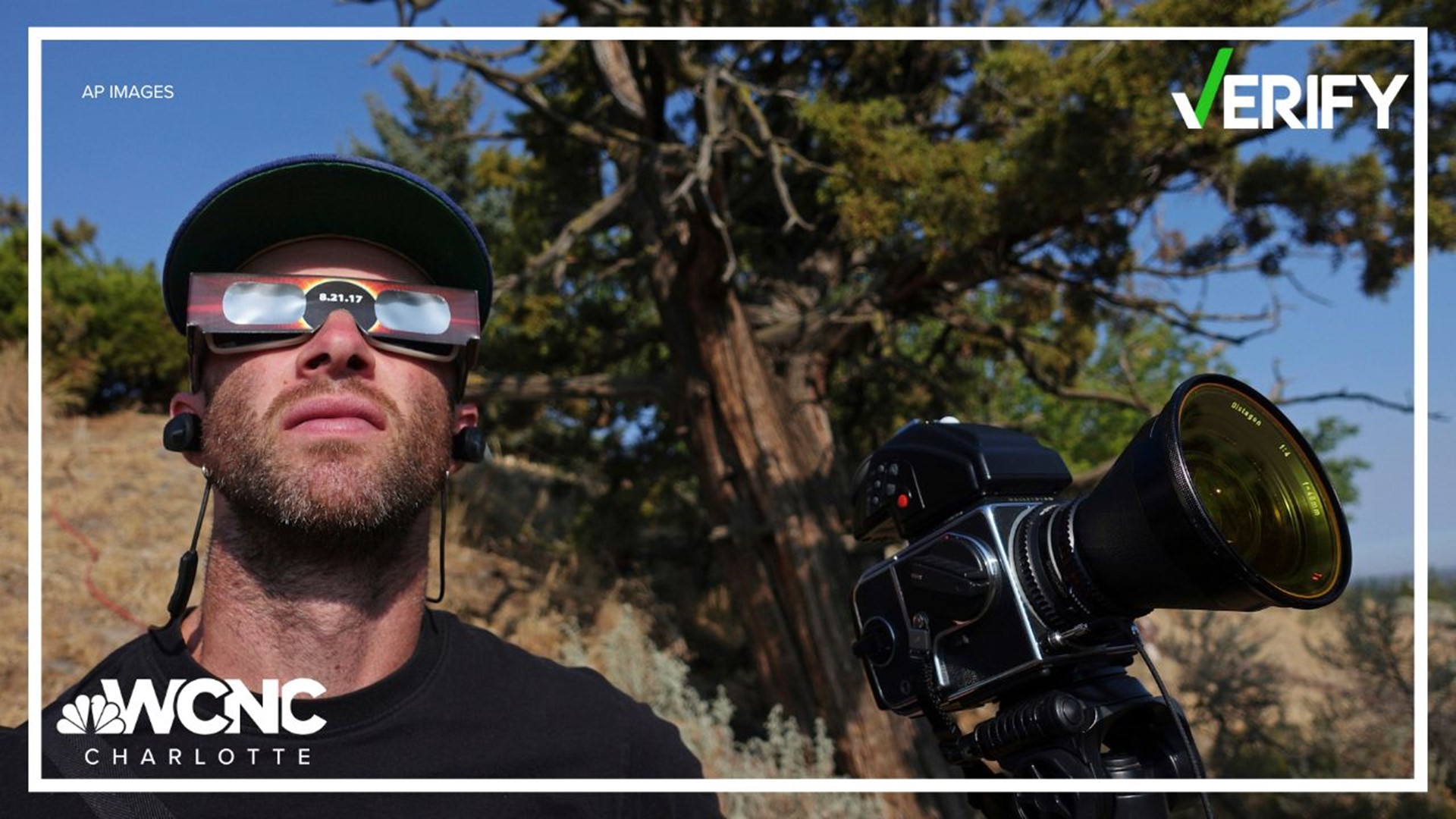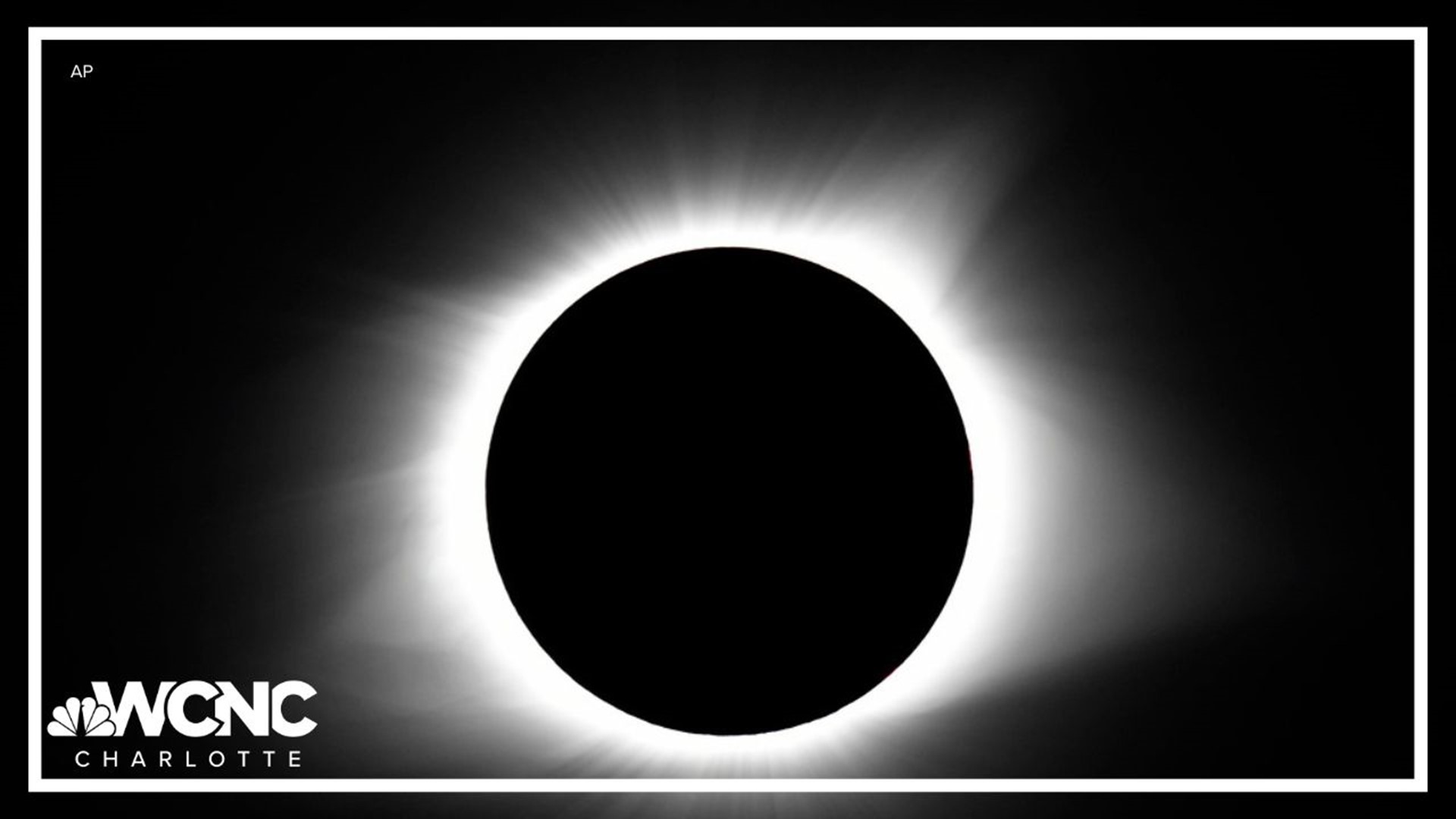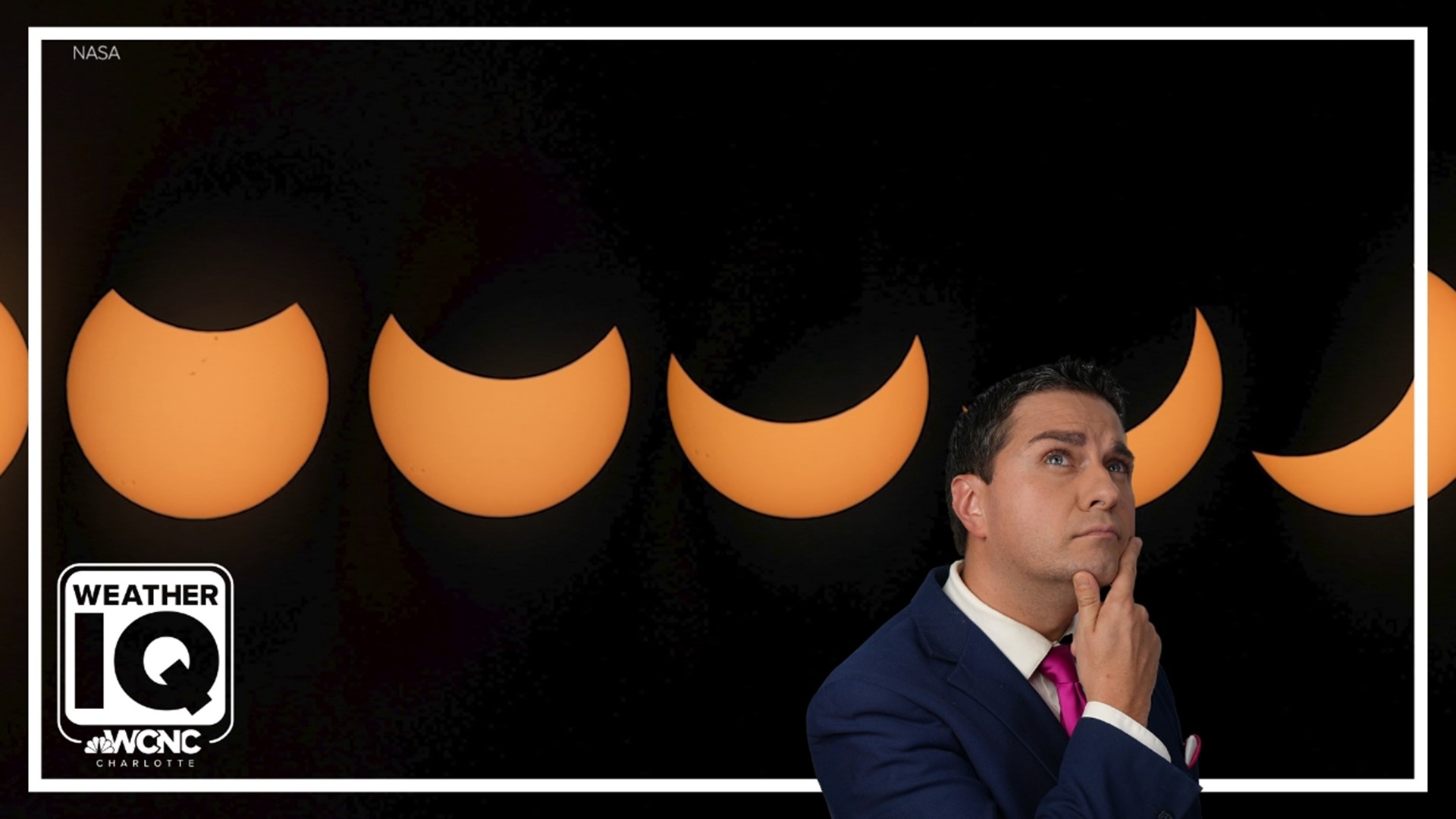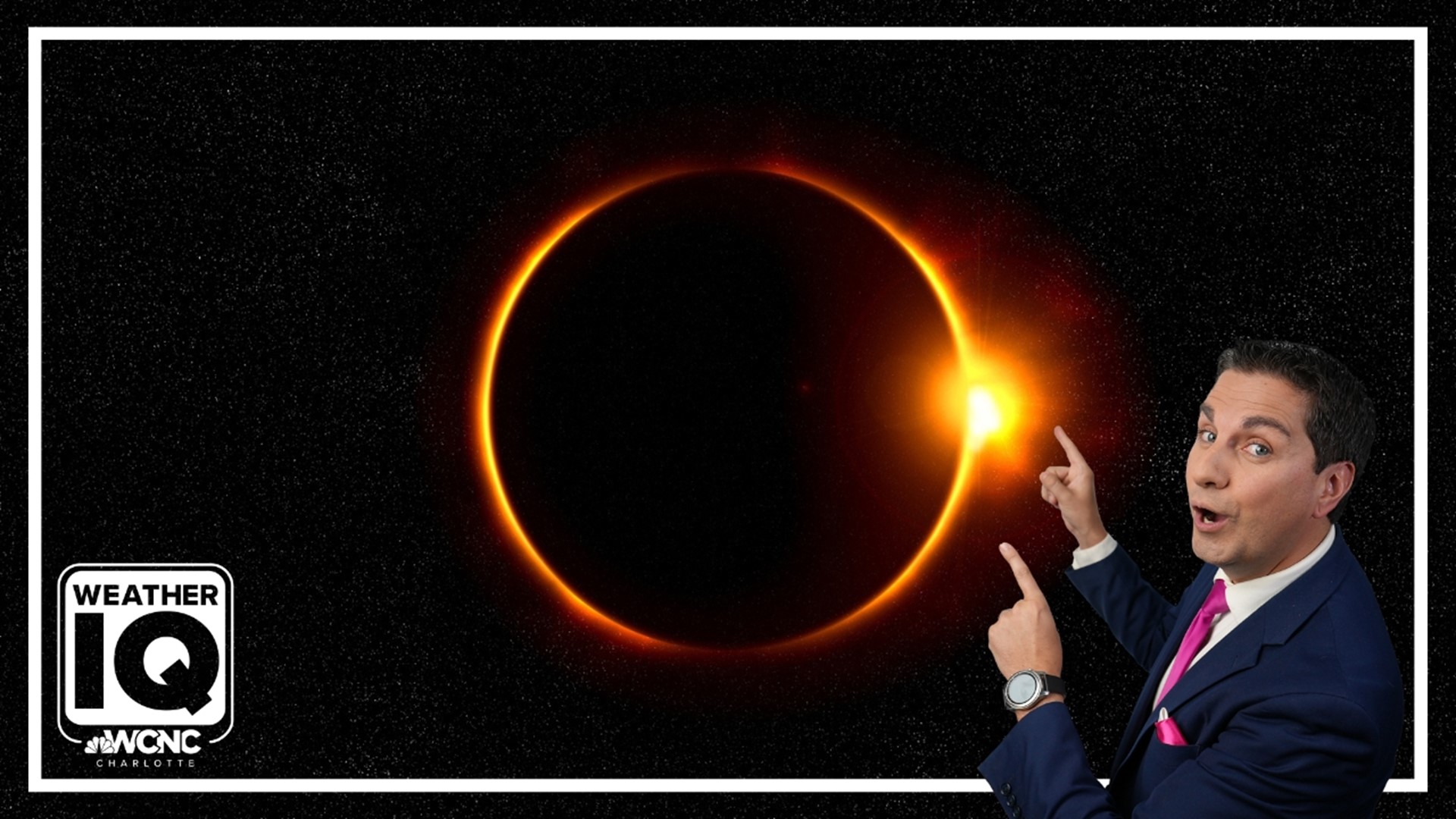CHARLOTTE, N.C. — Across much of the United States on Monday, a solar eclipse caused a spectacle and spark scientific insight.
A four-minute period of complete darkness occurred along the path of totality from Texas to Ohio and into New England. An estimated 31.6 million people live in the path of totality this year, according to NASA. That compares to 12 million people in 2017, when the path of totality came directly through the Carolinas.
In 2024, places like Charlotte, North Carolina, which saw near-totality in 2017, only reached a peak of 80% totality around 3:11 p.m. Monday.
Solar eclipse compared to 2017
SOLAR ECLIPSE 2024 PHOTOS from WCNC Charlotte viewers
To set proper expectations for the 2024 solar eclipse, it was important to revisit the 2017 event so many may still remember.
Seven years ago, the path started in Oregon, stretched across the U.S. and exited through South Carolina. The path ranged from 62-to-71 miles wide, according to NASA.
This year, places like South Carolina were still left with as much as 20% of the sun's light when the eclipse reached peak for them.

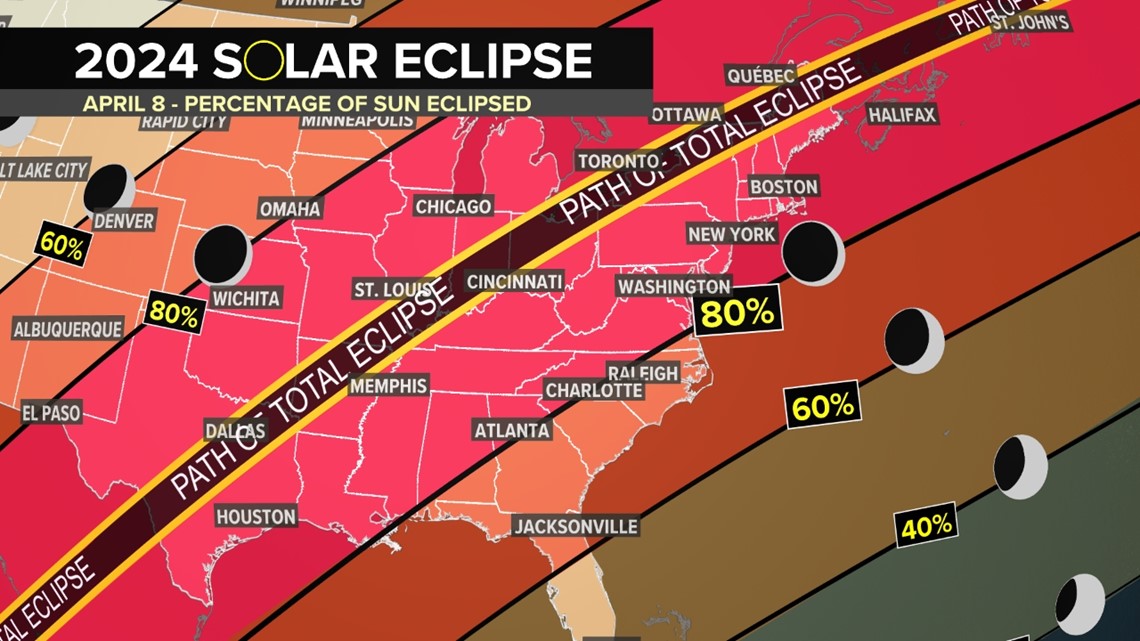
The path of totality in 2024 was be twice as wide as the one in 2017 due to the moon's distance from earth during the eclipse, NASA says.
The need for solar eclipse glasses
Outside the path of totality, there was still a partial solar eclipse.
A partial solar eclipse occurs when the moon blocks some, but not all, of the sun's light from reaching Earth.
With even the smallest amount of sunlight reaching Earth, it's important to wear proper eclipse glasses for safety. Without eclipse glasses, there is a serious risk to eye injury.
That's why anywhere experiencing the eclipse it was be vital to wear solar eclipse glasses. The only time it would be safe to look at the sun without eclipse glasses is during the approximately four minutes of totality in select locations.
Reusing solar eclipse glasses
Yes, it is safe to reuse solar eclipse glasses that may be left over from the 2017 solar eclipse, our VERIFY team found. The glasses must be undamaged and have the proper certification, which is labeled as ISO 12312-2.
How to photograph the eclipse
Just like looking at the sun without glasses can harm the eyes, looking at the sun without proper equipment can also harm cameras.
Experts suggested using a specialized solar filter to photograph the eclipse. In place of a proper camera filter, holding solar eclipse glasses in front of a camera's lens can work. However, photographing the eclipse with your smartphone could pose another problem: the lack of telephoto. While possible, a Charlotte photography expert says the eclipse will be very small on your phone's screen.
How animals react to a solar eclipse
Humans were not be the only creatures to notice the solar eclipses. Animals, including both pets and wildlife, reacted to the sudden darkness.
During the eclipse, daytime animals often return to their homes to prepare for the earlier-than-expected bedtime. At the same time, nocturnal animals sometimes awaken. The sound of crickets was, at times, met with birds returning to their nests.
Weather changes during a solar eclipse
Animal behavior during a solar eclipse was marked by more than just a change in sunlight as they also detected changes in the weather.
Just like at night, an absence of sunlight caused temperatures to drop about 10 degrees inside the path of totality. Winds also shifted.
The changes were short lived with winds and temperatures resorting back to pre-eclipse conditions once sunlight returned.
What scientists learn from a solar eclipse
A solar eclipse provided an opportunity for scientists to more closely examine the sun and its impact on Earth.
During the solar eclipse, NASA scientists launched rockets, balloons and a jet plane into the eclipse. By collecting data only available during the solar eclipse, scientists hoped to learn more about how solar radiation interacts with Earth.
Where and when to see the eclipse
The timing and location of the eclipse varied by location.
Entering the U.S. through Texas, the solar eclipse began its partial eclipse phase at around 12:20 pm in CDT in Dallas on Monday, April 8, according to NASA.
Totality was set to begin around 1:40 p.m. CDT until 1:44 p.m. CDT in Dallas, Texas, before completely ending at 3 p.m. CDT.
The eclipse then approached the East Coast around 1:59 p.m. EDT, in Cleveland, Ohio. Totality began at 3:13 p.m. and ended at 3:17 p.m. EDT.
In Maine, the eclipse started at 2:22 p.m. EDT, with totality beginning at 3:32 p.m. EDT and ending at 3:34 p.m. EDT.
The eclipse exited through Newfoundland, Canada, at 5:16 p.m. NDT.


TEGNA and the Associated Press contributed to this report
WCNC Charlotte’s Weather IQ YouTube channel gives detailed explainers from the WCNC Charlotte weather meteorologists to help you learn and understand weather, climate and science. Watch previous stories where you can raise your Weather IQ in the YouTube playlist below and subscribe to get updated when new videos are uploaded.


